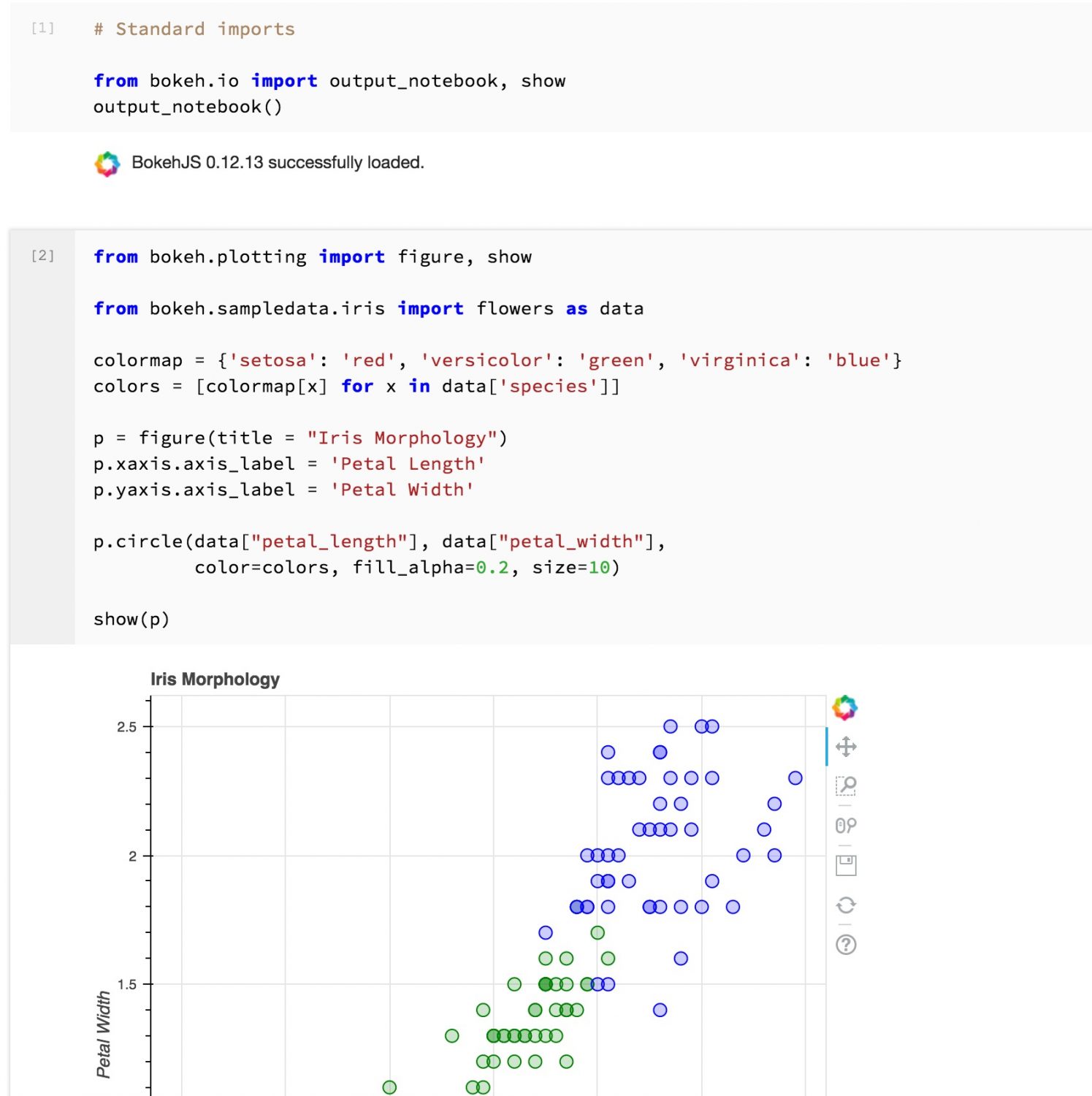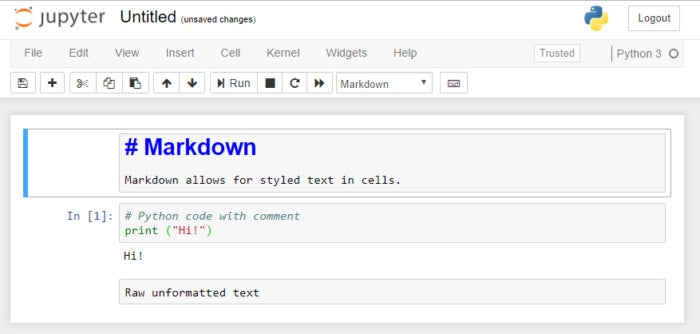

- PYTHON JUPYTER NOTEBOOK EXP HOW TO
- PYTHON JUPYTER NOTEBOOK EXP PDF
- PYTHON JUPYTER NOTEBOOK EXP CODE
- PYTHON JUPYTER NOTEBOOK EXP SERIES
We’ll add more features and details as we proceed.Ī Jupyter notebook is displayed on a web browser on a computer, tablet (e.g., IPad), or even your smartphone. This is a whirlwind tour of just the minimum we need to know about Python and Jupyter notebooks to get started doing statistics problems. The “User Interface Tour” and “Keyboard Shortcuts” are useful places to start, but there are also many other links to documentation there. Last revised: 1 by Dick Furnstahl can find valuable documentation under the Jupyter notebook Help menu. Standard medical example by applying Bayesian rules of probability Mini-project IIIb: Bayesian Neural NetworksĬhecking the sum and product rules, and their consequences Mini-project IIb: How many lines are there? Mini-project I: Parameter estimation for a toy model of an EFT Linear algebra games including SVD for PCA What is a convolutional neural network?ġ0.2. Variational Inference: Bayesian Neural Networksĩ.10. Neural network classifier demonstrationĩ.9.
PYTHON JUPYTER NOTEBOOK EXP PDF
Making figures for Ignorance PDF notebookĩ.6. Maximum Entropy for reconstructing a function from its momentsĨ.5. Ma圎nt for deriving some probability distributionsĨ.4. Ignorance pdfs: Indifference and translation groupsĨ.3. Exercise: Gaussian Process models with GPyĨ.2. Learning from data: Gaussian processesħ.4. zeus: Sampling from multimodal distributionsħ.3. Comparing samplers for a simple problemĦ.9. Solving orbital equations with different algorithmsĦ.8. Quick check of the distribution of normal variables squaredĦ.4. Example: Parallel tempering for multimodal distributions vs. Example: Parallel tempering for multimodal distributionsĥ.6. Evidence calculation for EFT expansionsĥ.5. Building intuition about correlations (and a bit of Python linear algebra)ĥ.3. Visualization of the Central Limit TheoremĤ.8. Error propagation: Example 3.6.2 in SiviaĤ.7. Parameter estimation example: fitting a straight line IIĤ.6. Metropolis-Hasting MCMC sampling of a Poisson distributionĤ.4. Follow-up: fluctuation trends with # of points and data errorsģ.2. Linear algebra games including SVD for PCAĢ.12. Assignment: Follow-ups to Parameter Estimation notebooksĢ.11. Amplitude of a signal in the presence of backgroundĢ.9. Linear Regression and Model Validation demonstrationĢ.8. Parameter estimation example: fitting a straight lineĢ.6. Assignment: 2D radioactive lighthouse location using MCMCĢ.5. Parameter estimation example: Gaussian noise and averagesĢ.3. Standard medical example by applying Bayesian rules of probabilityĢ.2. Interactive Bayesian updating: coin flipping exampleġ.6. Checking the sum and product rules, and their consequencesġ.5.
PYTHON JUPYTER NOTEBOOK EXP SERIES
Finally, we used our Taylor Series cosine function to build a plot with Matplotlib that shows how the Taylor Series approximation compares to Python's cos() function for angles between $-2\pi$ and $2\pi$ radians. At the end of the post, we coded the Taylor Series of $\cos(x)$ into a Python function.
PYTHON JUPYTER NOTEBOOK EXP CODE
We then refactored the code with the for loop into a function and parameterized our function so that we could calculate $e$ raised to any number calculated out to any number of terms. Next, we used a for loop to calculate $n$ terms in the Taylor Series expansion. First, we coded each term of the Taylor series individually.
PYTHON JUPYTER NOTEBOOK EXP HOW TO
In this post, we reviewed how to construct the Taylor Series of $e^x$ and $\cos(x)$ in Python. Breaking the Taylor Series formula into three parts can cut down on coding errors.

$$ \cos \left( x \right) \approx \sum\limits_$ and the denominator denom which is equal to $(2i!)$.

The Taylor Series expansion for $\cos(x)$ is below. Next, let's calculate the value of the cosine function using a Taylor Series.


 0 kommentar(er)
0 kommentar(er)
